Built in 1923, the Proctor Building was located at 205 South Market Street. It is a two-story, red-brick building with a corbelled cornice and a concrete panel below the sills. The cornice reads "1923, PROCTOR.” On the second floor are seven windows, wood frame with concrete sills. A shed canopy of cedar shakes is over the display windows on ground floor, which still features the original doors. It is currently the home of soon-to-be Green Coffee on the left and LaDiDa Antiques on the right. Mr. Proctor uses the upstairs for storage, and no tenants are currently up there.
Current view: Green Coffee and LaDiDa Antiques
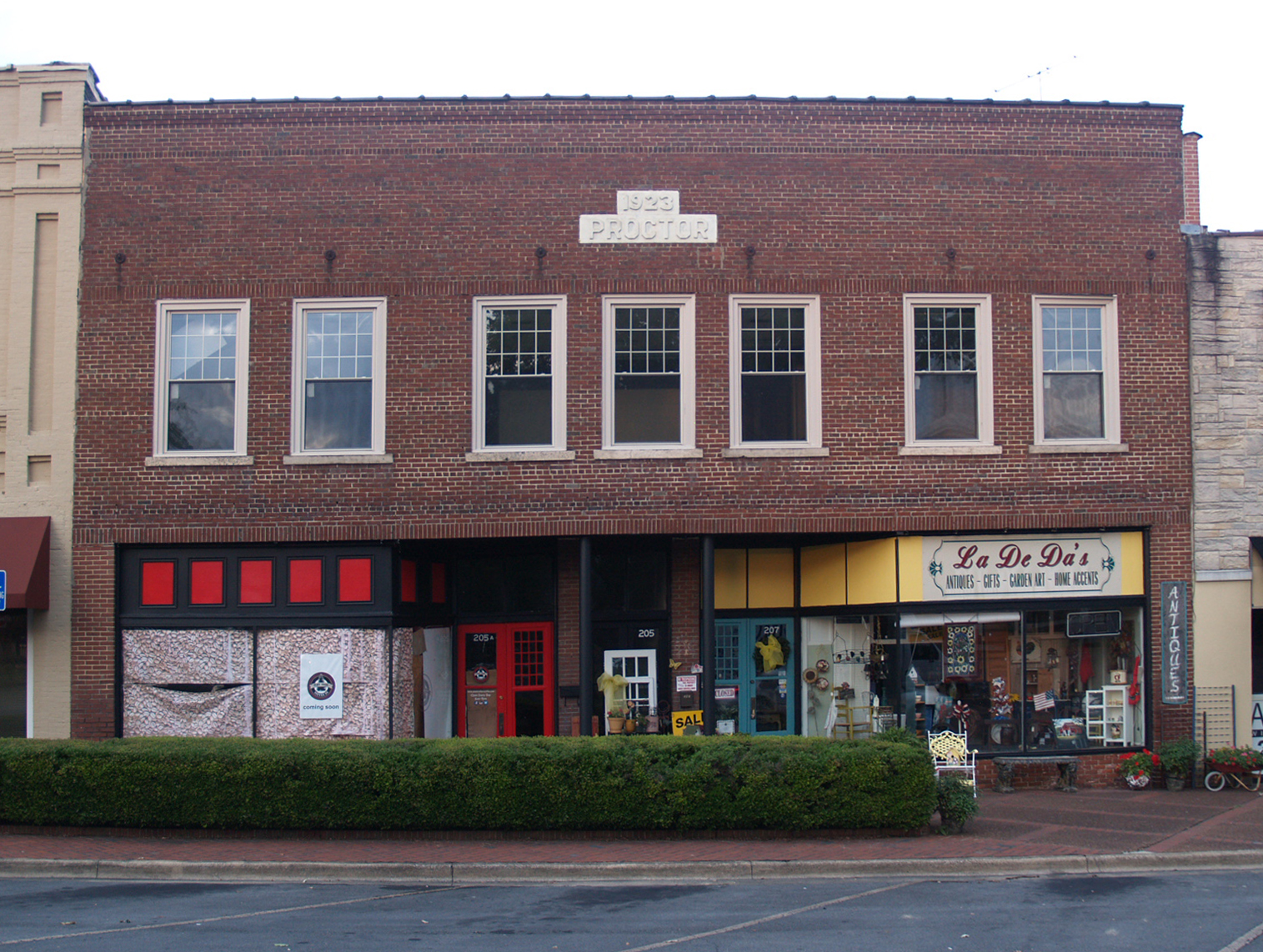
Pre 1923: tenants of the Proctor building predecessor
Before the Proctor Building was built, a frame building stood in this spot, and the McAnelly Funeral Home was downstairs in this building. Among the upstairs tenants was dentist Dr. T. J. Griffith. Their ads are found in the 1930 Reminder.
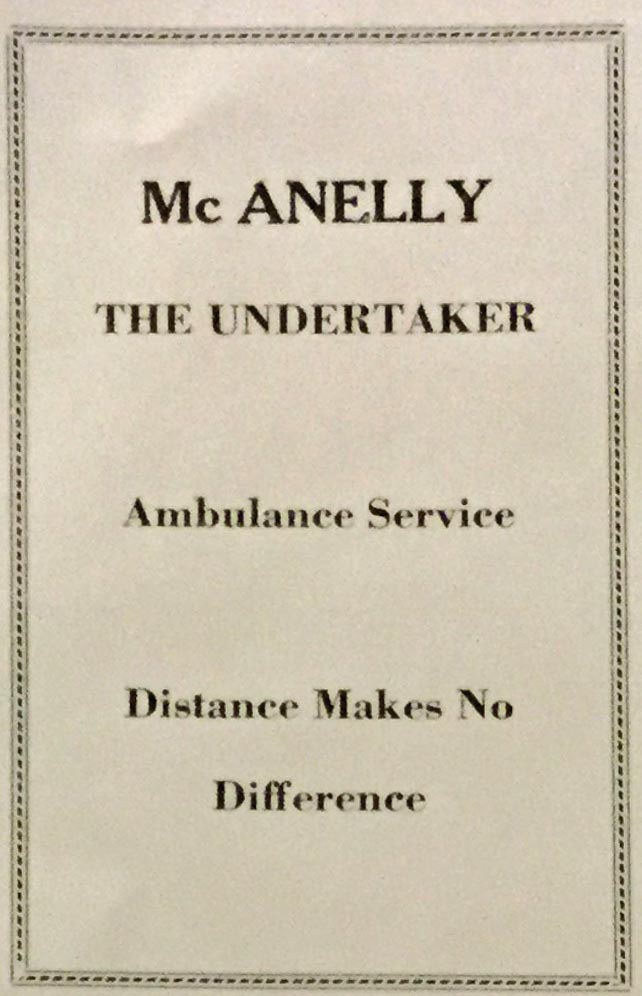
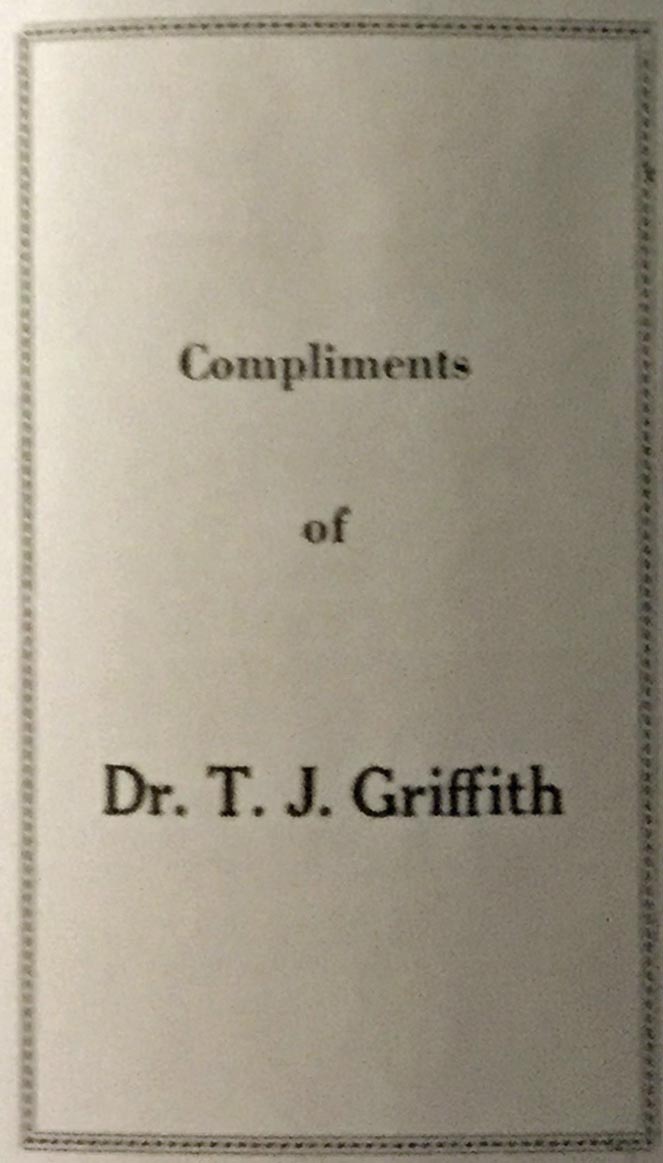
1928: East Side Cafe and the Post Office
It is likely that the original downstairs tenants of the Proctor Building were the East Side Cafe on the left and the Post Office on the right. Walt Hammer found his 1928 photo of the Proctor Building and Word Motor Company when it was on the square. Notice that the post office is in the Proctor Building on the left.
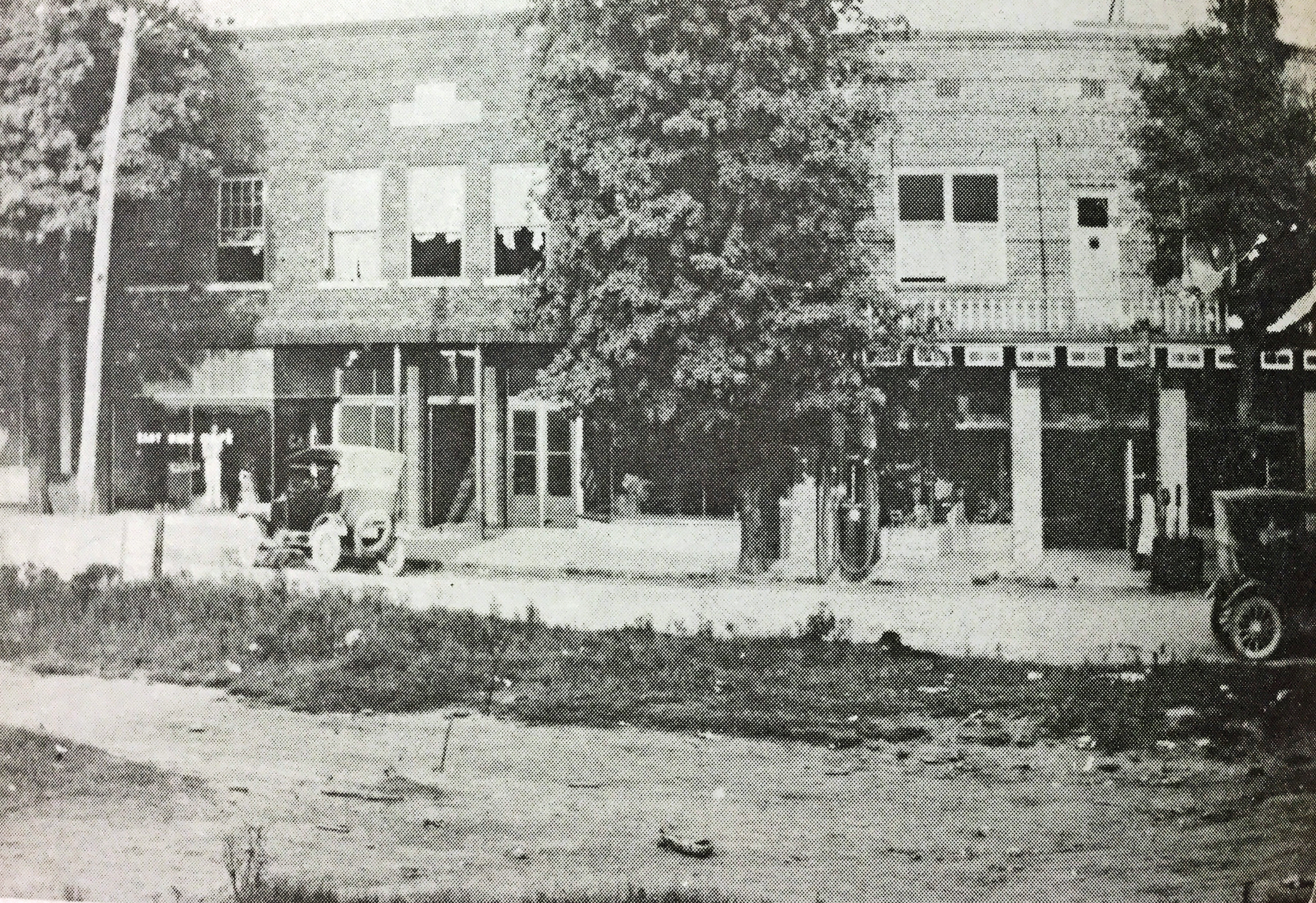
The detailed view of this photo shows the barely readable front for the East Side Cafe. Notice that the stairs to the second floor are open and that curtains found in the second floor windows indicate that tenants were located there, though it is not known who they were.
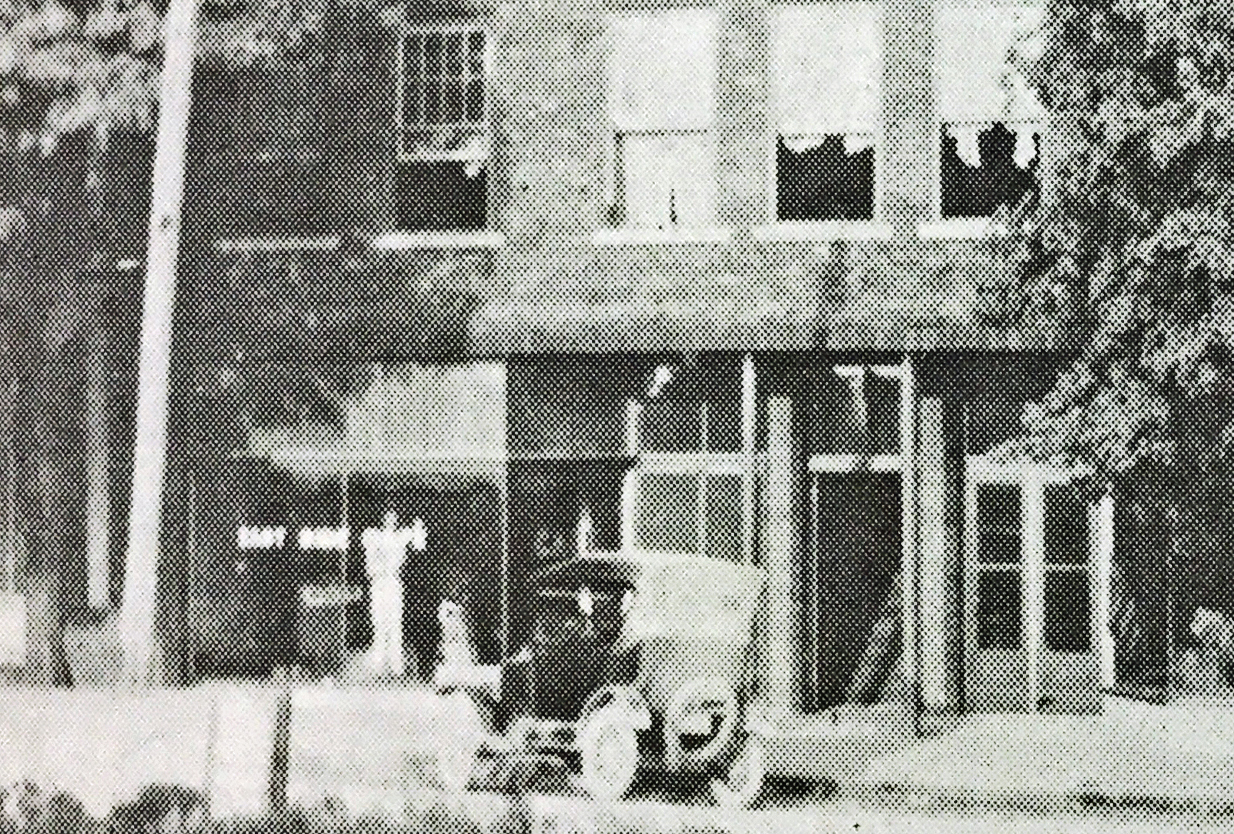
By the time of this ad in the 1929 Progressive Age (7 years after the Proctor Building opened), the East Side Cafe had moved to the Skelton Building, and by the time the 1930 JCHS Reminder yearbook was published, the Drug Sundries business was located in this space. This pair of ads shows this transition and identifies J. W. Holland as the initial owner of Drug Sundries.
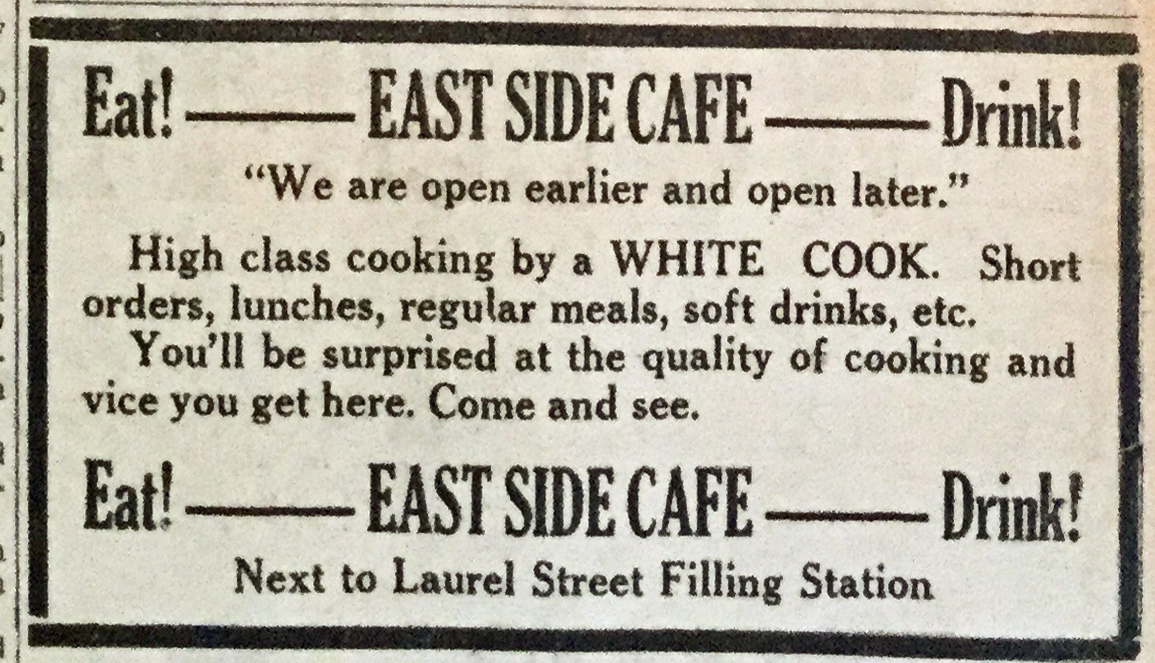
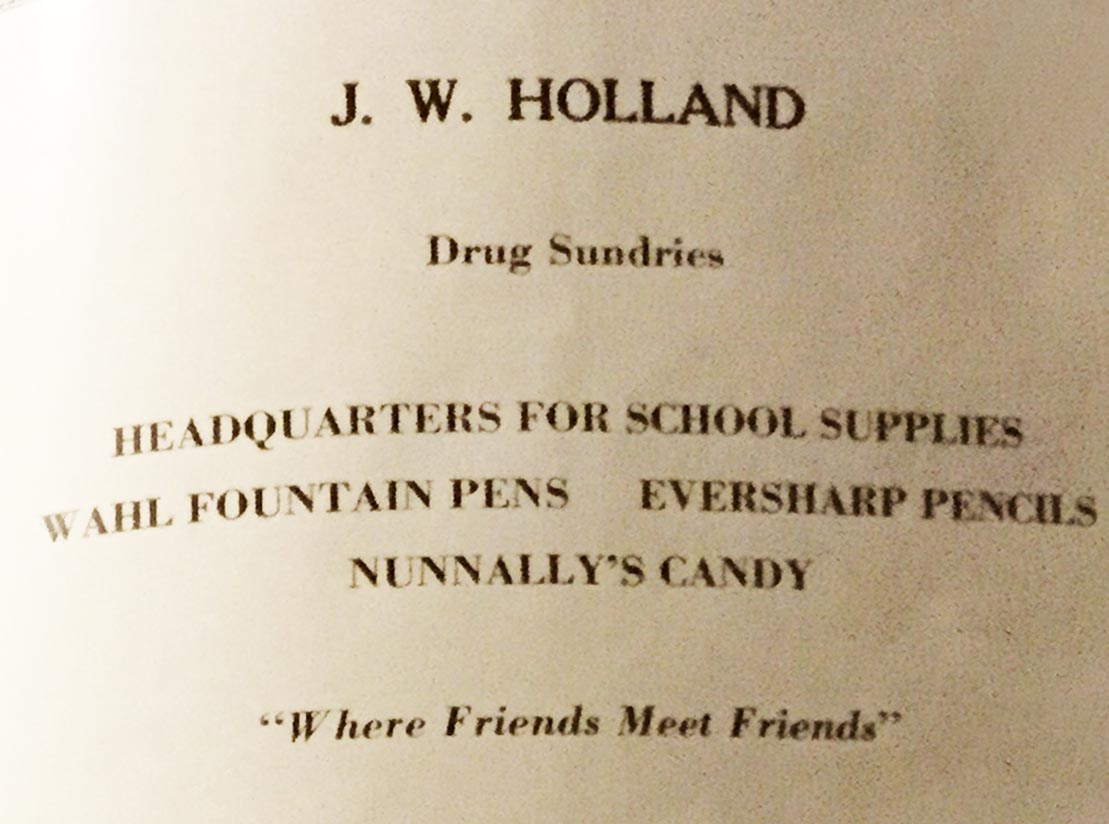
1930: ads for Drug Sundries Company
The 1930 Progressive Age ran this ad for Drug Sundries. Notice that the ad says that the post office is still next door (since the post office was not built until 1937). In the late 1930s, the Reid family purchased the sundries business, and young John T. Reid worked here before going off to World War II. Inez Law Starnes remembers that young John T. Reid “was across over here [in the Proctor Building] when he had to go to the army, by where the antique store is. He put a sign out on the front, ‘Gone to Hitler’s Funeral’. Isn’t that just like him? And when he came back, he came to this side, by the Ritz.”

1930: Cunningham Murder in Reid Sundries
In the 1930’s, Sundries Drug Company was the scene of one of the city’s most infamous murders. Harry Cunningham, described by the Jackson County Sentinel as “one of the finest young men of the community and who did not drink or associate with any but the nicest of girls,” came to Scottsboro on Saturday, April 5, 1930, to see a movie at The Dreamland Theater, housed in the Claybrook building, two doors down. Following the movie, he and friends went to the Drug Sundries Company store. While standing in the front of the store behind a large window opening to the street, he was approached by a 19-year old woman named Nuby Moates, who told him that a woman on the street wanted to talk to him. Moates claimed that Cunningham had confronted her companion in front of The Dreamland and had slapped her. Cunningham protested that he did not know the woman who claimed he had assaulted her and would not follow Moates outside.
Moates cursed him and walked out the the street. She handed the other woman, 17-year-old Myrtle Berry Graham, a knife she had stolen stolen earlier in the day by picking a man’s pocket. Graham walked into the Drug Sundries store and stabbed Cunningham so quickly that no one realized what was about to occur or had enough warning to stop it.
Jim Holland, owner of the Sundries Drug Company, rushed young Cunningham to Dr. Bridges office on the north side of the square, only to find that Dr. Bridges was not in his office. By the time he got Cunningham to Hodges Hospital, two blocks away, he was dead.
Harry Cunningham’s father, Hal, addressed an angry crowd shortly after his son’s murder to dissuade them from lynching the two women.
Nuby Moates and Myrtle Berry Graham were sentenced to life in prison. The jury deliberated 20 hours because some of the jurors held out for the death penalty.
Graham died in 1942. Later that year, Nuby Moates, who had been charged as an accessory to the murder, was released on “good behavior” from the Wetumpka prison.
1940s and 1950s: Steinburg Clothing
In the late 1940s and early 1950s, this building was the home of Steinburg Clothing Store. The ad below is from the 1952 newspaper. Other ads for Steinburg’s have been found as early as 1942. It is assumed that Steinburg’s took up both sides of the Proctor Building, since it was “Scottsboro’s largest store.”
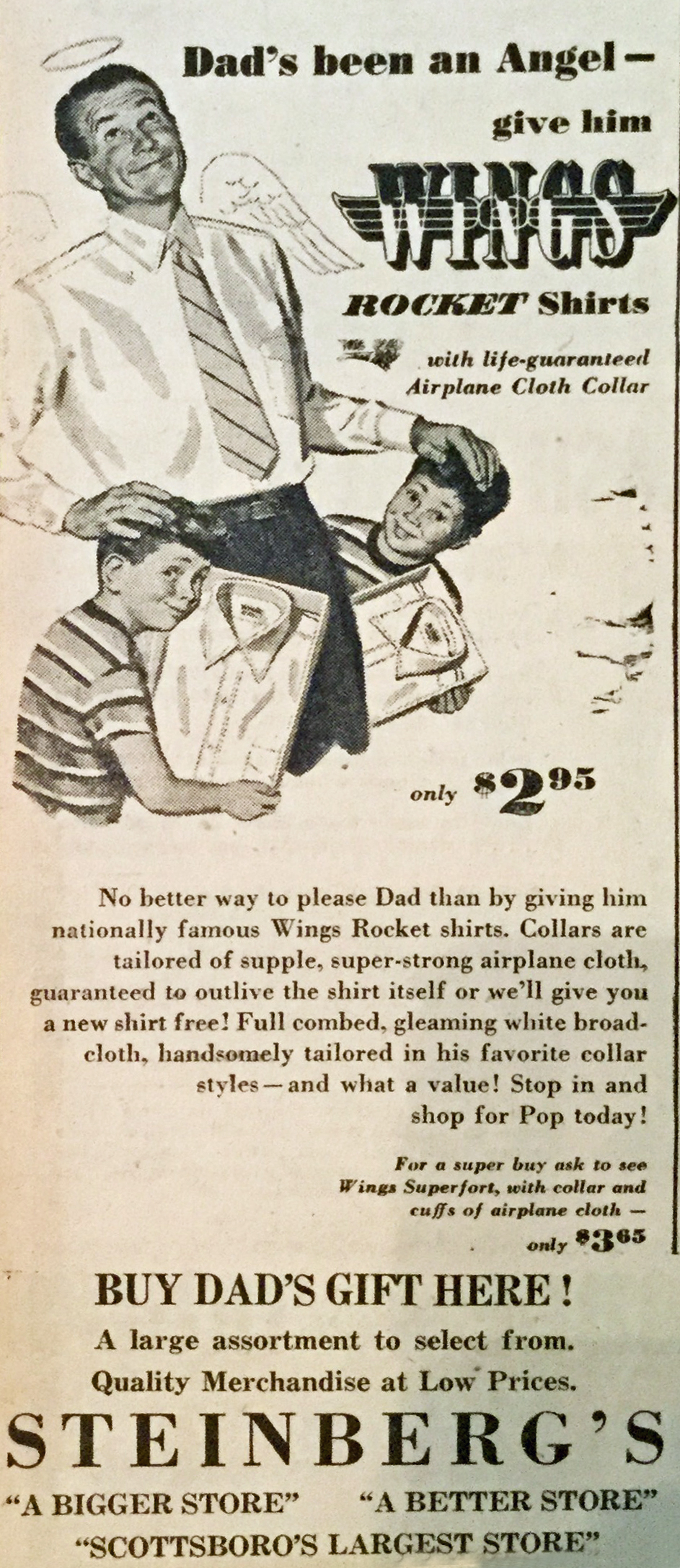
Late 1950s through the late 1960s: Adams Clothing store
During the 1950s and 1960s, this building was home to Adams Store; one side was men’s and the other side women’s clothing.
McDonald “Mack” Kennamer, the brother of Eva Kennamer Parks who managed The Quality Store with her husband Albert, managed both the Darwin’s and Adams clothing stores for the W. S. Adams family from Guntersville in the late 1950s and 1960s. According to Bill Parks, the Adams father and son owned the two businesses on the corner of Market and Laurel. W. J. “Jimmy” Adams Jr. ran the Adams Casualette business which, Bill recalls, “had the cool clothes,” the high-end women’s labels like Villager. Darwin’s, owned by W. J. Adams Sr., carried less prestigious brands. W. J. Sr. expanded his line of stores to include Darwin stores in Arab, Albertville, and Guntersville. Jimmy had other Adams stores in Mountain Brook and Decatur, where they are still in business today. Mack later opened Kennamer’s Clothing Store in the Brown Building about 1964. The Adams ad below is from the 1969 high school yearbook.
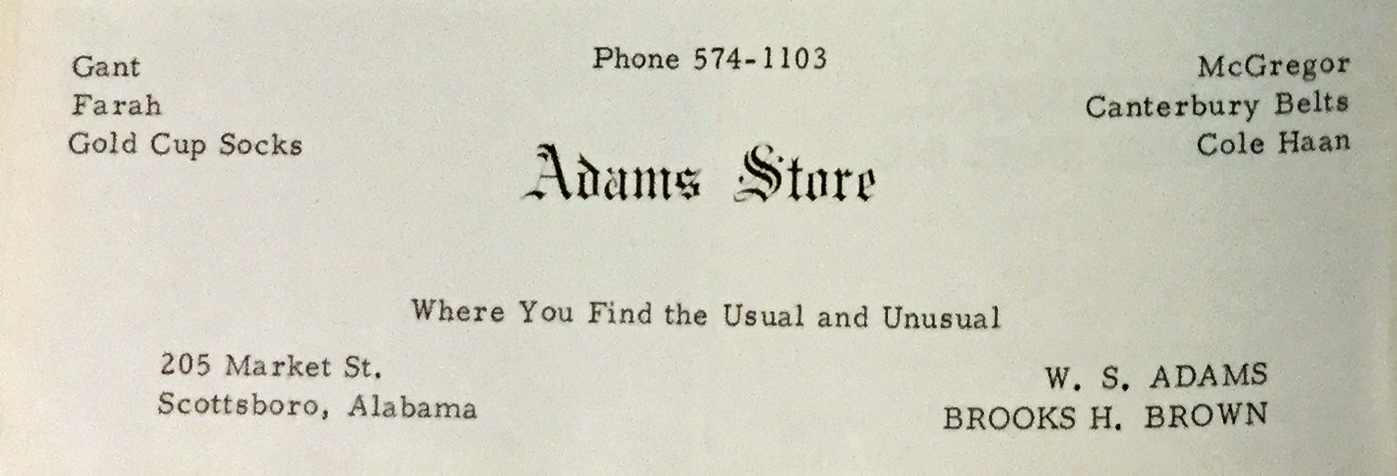
1975: Western Auto
In the 1970s when Darwin’s closed, Adams moved into the Claybrook Building, and both sides of the Proctor Building housed Western Auto. The photo below by the TVA was taken in 1975.
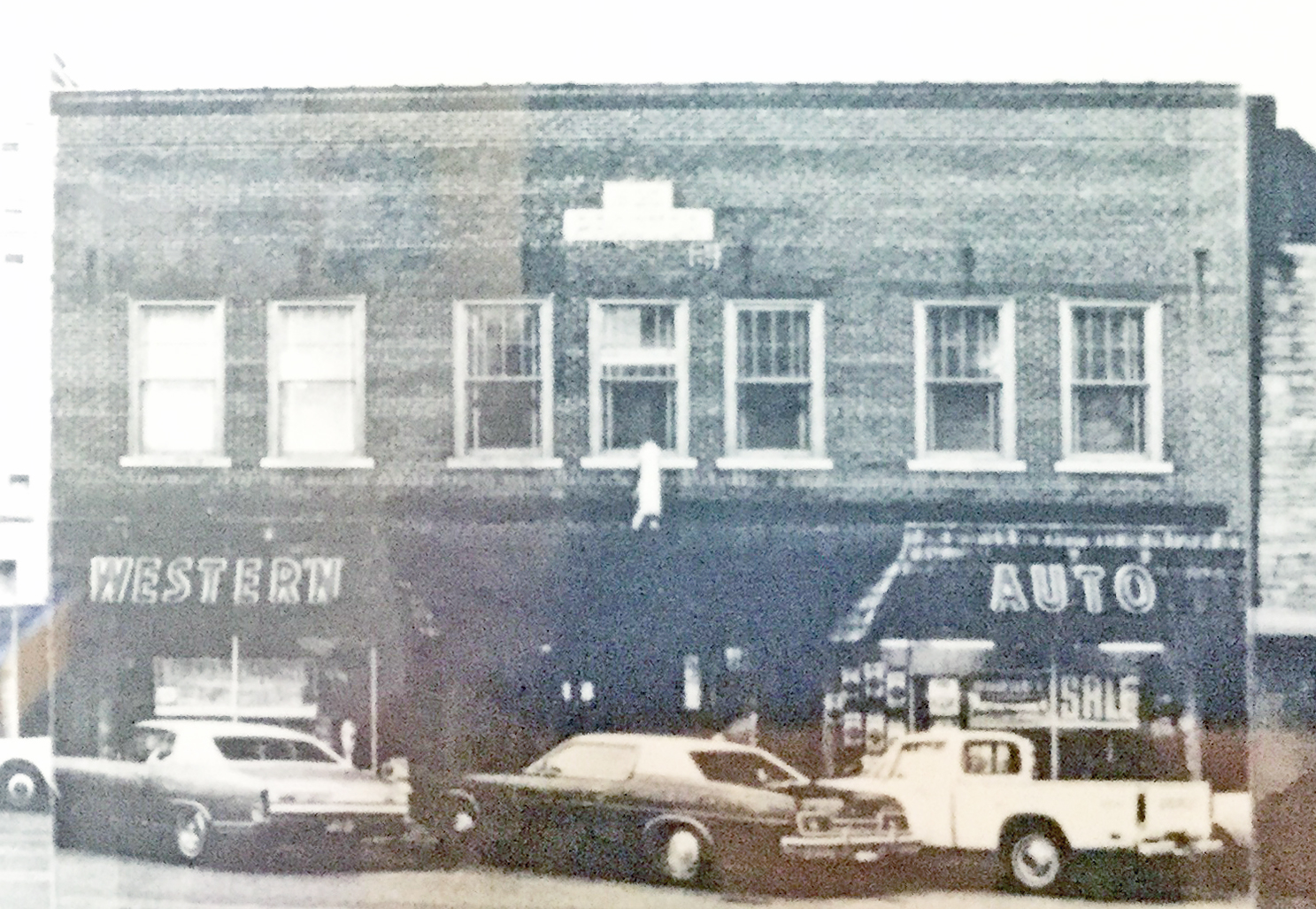
1950s-1970s: Second floor tenants
During the 1950s and 1960s, while Adams Clothing Store occupied the first floor, these offices were found on the second floor:
1956
- Joseph A. Lee, Attorney
- John B. Tally, Attorney
- Jim Proctor, Attorney
- J. E. Johnson, Dentist
- Robert O. Haas Insurance
- Alabama Farm Bureau Insurance
1960
- Dr. J. E. Johnson, Dentist
- J. A. Lee, City Attorney
- J. B. Tally
1965-67
- Thomas and Proctor, Attorneys
1970
- M. J. Vickers, CPA
- Thomas and Proctor, Attorneys
1972-1975
- Robert S. Thomas and John F. Proctor, Attorneys
Nancy Hammer Bradford recalls that one of the last businesses upstairs in the Proctor Building was Judy Proctor’s gallery.
Recent tenants
LaDiDa’s has been in its current location in the right side of the Proctor Building since DATE. The turnover on the left side has been a lot more frequent. As noted earlier, it is currently being renovated to serve as the home of Green Coffee. Prior to this, it was a ladies’ clothing store called Glitzy Glam.